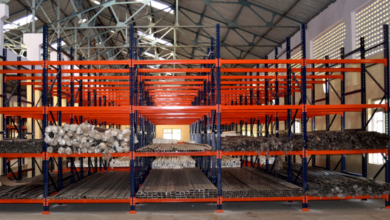Streamlining Production: IT Services Redefining the Manufacturing Sector

In the dynamic landscape of the manufacturing sector, the integration of Information Technology (IT) services has emerged as a transformative force, revolutionizing traditional production methods.
The synergy between manufacturing and IT has paved the way for increased efficiency, reduced costs, and enhanced overall productivity. IT services for manufacturing play a crucial role in enhancing efficiency, productivity, ensuring overall business success and operational effectiveness of the industries.
This article explores the pivotal role of IT services in streamlining production processes within the manufacturing industry, examining the key technologies, challenges, and future prospects.
The Evolution of IT in Manufacturing
1. Early Adoption and Automation
The integration of IT services in manufacturing is not a recent phenomenon. Historically, manufacturers have embraced IT to automate repetitive tasks, leading to significant improvements in operational speed and accuracy.
Early adopters employed basic computer systems to handle inventory, payroll, and other administrative functions, marking the initial steps toward a more connected and efficient production environment.
2. The Rise of ERP Systems
Enterprise Resource Planning (ERP) systems emerged as a game-changer in the manufacturing sector. These comprehensive software solutions allowed companies to integrate various business processes, from procurement to production and distribution.
By providing a unified platform, ERP systems enabled real-time data sharing and improved decision-making, setting the stage for more advanced IT interventions.
Key IT Services Transforming Manufacturing
1. Internet of Things (IoT)
The Internet of Things (IoT) has revolutionized manufacturing by connecting physical devices and machines, allowing them to communicate and share data. In the manufacturing context, IoT facilitates the creation of “smart factories” where machines can autonomously make decisions based on real-time data.
Sensors embedded in equipment collect information on performance, maintenance needs, and production output, enabling proactive maintenance and minimizing downtime.
2. Big Data Analytics
The influx of data generated by IoT devices and other sources within manufacturing operations has given rise to the importance of Big Data analytics. Manufacturers can leverage advanced analytics tools to extract valuable insights from large datasets.
This data-driven approach enables predictive maintenance, demand forecasting, and optimized supply chain management, leading to more efficient production processes and reduced costs.
3. Artificial Intelligence (AI) and Machine Learning (ML)
Artificial Intelligence (AI) and Machine Learning (ML) are driving significant advancements in manufacturing. AI-powered systems can analyze complex datasets to identify patterns, predict equipment failures, and optimize production schedules.
Machine Learning algorithms learn from historical data, continually improving their accuracy and efficiency over time. These technologies empower manufacturers to enhance product quality, reduce defects, and increase overall operational efficiency.
4. Robotics and Automation
The integration of robotics and automation in manufacturing processes has been a transformative force. Robotic systems can handle repetitive and labor-intensive tasks with precision and speed, minimizing the risk of errors.
From assembly lines to material handling, robots contribute to increased production rates and improved product consistency. Collaborative robots, or cobots, work alongside human workers, enhancing overall efficiency and safety in the manufacturing environment.
5. Cloud Computing
Cloud computing has become an integral part of modern manufacturing operations. By moving data storage and processing to the cloud, manufacturers can access information from anywhere, enabling real-time collaboration and decision-making.
Cloud-based solutions also facilitate scalability, allowing manufacturers to adapt to changing production demands seamlessly. This flexibility is particularly valuable in an industry characterized by dynamic market conditions.
Challenges in Implementing IT Services in Manufacturing
Despite the transformative potential of IT services, the integration process in the manufacturing sector is not without its challenges. Several factors can impede the seamless adoption of advanced technologies, including:
1. Cost Considerations
Implementing sophisticated IT solutions requires a significant upfront investment. Many manufacturers, especially small and medium-sized enterprises (SMEs), may find it challenging to allocate resources for the adoption of cutting-edge technologies.
Balancing the cost of implementation with the expected return on investment (ROI) remains a critical consideration for manufacturers.
2. Skills Gap
The successful integration of IT services requires a skilled workforce capable of operating and maintaining these technologies.
However, there is a growing skills gap in the manufacturing sector, with a shortage of professionals proficient in areas such as data analytics, AI, and robotics. Bridging this gap through training and education initiatives is crucial for realizing the full potential of IT in manufacturing.
3. Security Concerns
As manufacturing processes become more interconnected, the risk of cybersecurity threats increases. The protection of sensitive data and intellectual property is a paramount concern for manufacturers leveraging IT services.
Implementing robust cybersecurity measures and staying abreast of evolving threats is essential to safeguarding the integrity of manufacturing operations.
4. Integration with Existing Systems
Many manufacturers operate legacy systems that may not easily integrate with modern IT solutions. The process of integrating new technologies with existing infrastructure can be complex and time-consuming.
Manufacturers must carefully plan and execute the integration to avoid disruptions to ongoing production processes.
Future Trends and Prospects
The intersection of IT and manufacturing is an ever-evolving landscape, and several trends are poised to shape the future of the industry.
1. Edge Computing
As the volume of data generated by IoT devices continues to increase, the adoption of edge computing is gaining momentum. Edge computing involves processing data closer to the source (at the “edge” of the network) rather than relying solely on centralized cloud servers.
This approach reduces latency and enhances real-time decision-making capabilities, making it particularly relevant for time-sensitive manufacturing processes.
2. 5G Connectivity
The rollout of 5G networks is set to revolutionize connectivity in manufacturing. The high-speed, low-latency capabilities of 5G will enable seamless communication between devices, paving the way for more advanced applications in smart manufacturing.
From augmented reality (AR) for maintenance tasks to real-time monitoring of production lines, 5G connectivity holds the potential to further enhance the efficiency and responsiveness of manufacturing operations.
3. Continued Integration of AI and Robotics
The synergy between AI and robotics is expected to deepen, leading to more intelligent and adaptable manufacturing systems. AI algorithms will continue to evolve, enabling robots to handle complex tasks with increased autonomy.
This evolution will not only improve efficiency but also enable manufacturers to respond quickly to changes in demand and market conditions.
4. Sustainable Manufacturing Practices
IT services will play a crucial role in driving sustainability in manufacturing. From optimizing energy consumption to reducing waste through predictive maintenance, technology can contribute to more environmentally friendly production processes.
Manufacturers will likely prioritize sustainable practices, driven by both regulatory requirements and consumer demand for eco-friendly products.
Conclusion
The integration of IT services is reshaping the manufacturing sector, ushering in an era of increased efficiency, flexibility, and innovation. From the early adoption of basic computer systems to the current era of advanced technologies like IoT, AI, and robotics, manufacturers continue to leverage IT to streamline production processes.
While challenges such as cost considerations, skills gaps, and security concerns persist, success stories from industry leaders demonstrate the transformative potential of IT in manufacturing.




